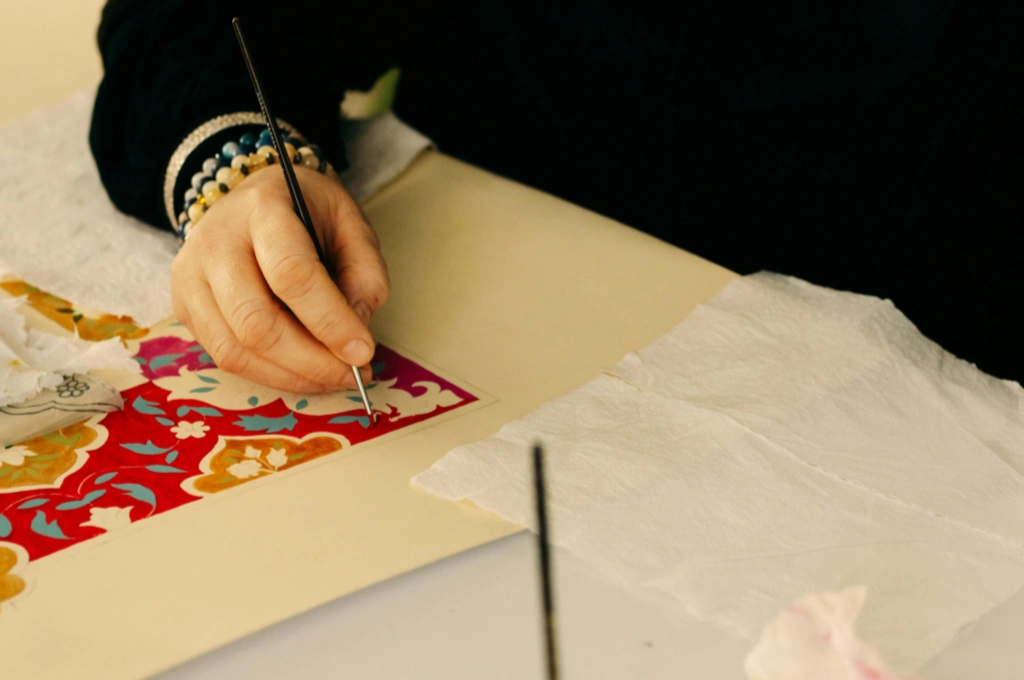Against the backdrop of shrinking aid flows, shifting global priorities, and the changing nature of philanthropy, one need is crystal clear: We must get more resources into the hands of local organisations, flexibly and for the long term. For 25 years, EMpower has been on a journey to demonstrate what this looks like in practice.
In today’s philanthropic landscape, success is too often measured in short cycles: annual grants, quarterly reports, and the pursuit of quick wins. These approaches may capture activity, but they rarely capture transformation. If we are serious about achieving deep, systemic change, we must adopt a different model—one rooted in patience, trust, and long-term commitment.
In this moment of turbulence, the sector needs not just more capital, but also patient capital. Patient capital refers to flexible and sustained funding that allows organisations to plan beyond the short term, take risks, learn from failure, and build enduring solutions. It also demands a rethinking of the funder’s role. Instead of acting as controllers of outcomes, funders must become partners in a shared journey. This requires humility, recognising that not every risk will succeed and that accountability must flow in both directions.

Why patient capital matters
Transformational change cannot be rushed. Shifting entrenched systems, challenging social norms, and building equitable alternatives is slow, complex, and unpredictable. Progress is rarely linear; it unfolds in cycles of experimentation, setbacks, and breakthroughs.
When we force change into neat log frames and short-term indicators, we limit the space for innovation and, ironically, for true accountability. Patient capital disrupts this cycle.
Relationships built on mutual accountability and honest dialogue create the conditions for transformation. Funders must be willing not only to challenge, but also to be challenged. When partners are empowered to speak candidly, both sides grow stronger.
1. Creating room for innovation and making mistakes
One of our partners in Delhi had launched a livelihoods programme for girls, but attendance was low and very few participants secured jobs. While it would have been easy to end the programme after the first 12-month grant cycle, we chose to continue. Working closely with the partner, we discovered that the real barriers lay with gatekeepers—families, parents, in-laws, and boys. Because we had the flexibility of patient capital, we entered into a second cycle, creating space to experiment, learn, and adapt. Together, we expanded the programme to include sessions for gatekeepers, addressing the resistance head-on. By tackling the systemic barriers alongside training, we grew the initiative into one of our most successful livelihoods programmes, with both strong participation and high job placements. Patient capital creates space for organisations to pivot, to re-evaluate, and, importantly, to fail. If funders demand certainty, they suppress the creativity needed for lasting solutions. Normalising failure is therefore critical. Without space to try, falter, and adapt, innovation withers. Patient capital embraces this reality and provides the time and space required for meaningful change to take root.
2. Building value through long-term funding
Security is the bedrock of innovation. When funders commit beyond short cycles, grassroots organisations are able to move from survival to strength. They can retain experienced staff, reduce anxieties and time spent chasing the next grant, and think strategically. They can also take risks that open the door to systemic breakthroughs.

Leaders often describe the psychological shift this enables. It creates the confidence to dream bigger, knowing that support is not conditional on immediate wins. This is the essence of patient capital—it unlocks ambition. And this ambition often leads to innovation that is powerful enough to influence philanthropy and entire sectors.
Long-term funding lowers transaction costs, builds trust, and shifts decision-making power to local experts.
A clear example is the work of Azad Foundation. We initially supported their Women With Wheels (WWW) programme, which trains women to be professional drivers. When the team decided to pilot a new initiative, Men for Gender Justice, patient capital gave them the freedom to test the idea. The new programme that emerged not only stood on its own, but also reinforced WWW. By engaging men, families, and communities, the initiative created a more supportive environment, leading to greater ambition and success for women pursuing careers as professional drivers.
Azad Foundation went on to share its expertise with Network of Women in Growth (NEWIG), one of our partners in Ghana. NEWIG shifted its approach from preparing women for traditional livelihoods, such as bead- and soap-making, to working in transportation. Today, several of Accra’s public buses are driven by women who have been trained by NEWIG.
Long-term funding also creates efficiency. It lowers transaction costs, builds trust, and shifts decision-making power to local experts.
3. Amplifying community wisdom
Traditional models often assume expertise flows from funders to grantees. In reality, the most innovative and sustainable ideas usually emerge from within the communities themselves. Patient capital holds up the megaphone to community expertise by respecting local wisdom and giving such ideas the time and space to develop and adapt.
By recognising community wisdom in all its forms, funders are able to unlock deeper, more durable change. Solutions rooted in local knowledge endure far beyond funding cycles. They shape futures long after formal support has ended.
Our Girls Advisory Council in India embodies this principle. Since 2018, adolescent girls part of the council have served as lead advisors, providing direct input on country strategies to ensure they are grounded in lived experience rather than external assumptions. Their role is not symbolic—the council holds formal decision-making authority, including final approval of all new grants in India. They are helping us shape country strategies based on what they need, not on what we assume they need. This recognition of local and lived expertise has had a ripple effect. Many of our grantee partners now embed meaningful youth engagement approaches into their work, ensuring that programmes remain deeply responsive to the realities and aspirations of young people.
4. Rethinking scale
Long-term support enables organisations to think beyond the next cohort or project, and to push the boundaries within communities and in policy and programming. This is how durable policy shifts and embedded solutions emerge.
Philanthropy often defines scale narrowly as numbers: more programmes replicated, more participants reached. While breadth matters, it is only one part of the picture. Patient capital invites us to embrace broader dimensions of scale.
- Scale as depth: Mobilising entire ecosystems around change, where one strong organisation catalyses wider transformation across stakeholders.
- Scale as influence: Shaping policy, sectoral norms, and philanthropic practice, extending impact beyond programme delivery.
- Scale as sustainability: Ensuring that, after years of support, organisations are more resilient, better governed, and financially secure.

Intermediaries as a vehicle of patient capital
How often do we hear the call to bypass intermediaries and ‘fund directly’? While well intentioned, this misses the point. In reality, intermediary funding is often how patient capital is made possible, as well as nurtured and sustained. Intermediaries are organisations that sit between donors and grassroots partners. At their best, they ensure that resources are accessible, stable, and responsive to local realities. They can:
- Break down large sums into flexible grants that grassroots partners can absorb.
- Provide tailored capacity building—in governance, safeguarding, financial systems, monitoring, and more—based on what local partners need. For many organisations, this kind of accompaniment is as valuable as the funding itself. Partners can take risks, adapt, and grow without the fear of being abandoned after a single setback.
- Absorb volatility and provide stability to partners on the ground. Intermediaries may receive only a two- or three-year grant themselves, but they commit to partners on the ground for a decade or more.
Leveraging the power and purpose of intermediaries must be done thoughtfully. While there is a narrative shift towards funding through intermediaries, this call to action must be nuanced to say that donors should fund through the right type of intermediary. What this means is that intermediaries need to be held accountable, as not all of them centre local partners and can risk replicating top-down approaches. Funders must champion the intermediaries who strengthen organisations for the long run, weathering uncertainty themselves in order to shield their partners from it.
The hard truths of patient capital
Patient capital is not easy. It requires funders to embrace uncertainty, support ambitious ideas that may not work, and stay engaged when progress is unclear. It is uncomfortable, but necessary.
It also comes with financial realities. For us at EMpower, our commitment to long-term support for youth-centric organisations is like taking on a 10-year mortgage for every new partner. Each new commitment we make is an obligation stretching far into the future.
With proper measurement, patient capital can create accountability and be transformative.
And unlike endowed foundations, we do not have a corpus—we fundraise year on year. In years when markets are down and we have struggled to meet our own expenses, our 10-year commitments have felt daunting. In those moments, we have faced real dilemmas: Do we honour our long-term obligations or do we fund promising new opportunities? Our answer has always been to stand by our partners. We have paused new sourcing, flattened grant increases, and cut our own costs, but we have not walked away from our commitments. That discipline has been difficult, but it has built trust.
With proper measurement—metrics that capture not only outputs but also systemic shifts, organisational resilience, and ecosystem influence—patient capital can create accountability and be transformative. It also enables forward-facing financial planning, especially for intermediaries, so they can ensure that no matter how volatile the funding environment is, strong community-based organisations do not bear the brunt of the storm.
The future demands patience
The future will not be shaped by quick wins, but by patient commitments that allow organisations, leaders, and communities to thrive.
Patient capital is demanding. It requires courage, humility, and persistence from funders. It means absorbing risk and committing for the long haul. But when deployed thoughtfully—with the right metrics, through the right intermediaries, and with genuine partnership—it delivers transformational impact.
In a world of volatility and shifting priorities, the most resilient investments are those that anchor themselves in long-term commitments to organisations closest to the work. If philanthropy is to meet the challenges of our time, it must embrace this unlikely but powerful alliance: patient capital, channelled through strong intermediaries, anchored in community wisdom. Because the future depends on it.
Disclaimer: A member of IDR’s team serves on EMpower’s India Advisory Council.
—
Know more
- Learn about seven types of durable capital that can help organisations become more resilient and sustainably deepen their impact.
- Read how philanthropy can help expand the impact of local leaders.
- Learn more about the power of grassroots wisdom and traditional knowledge systems.




